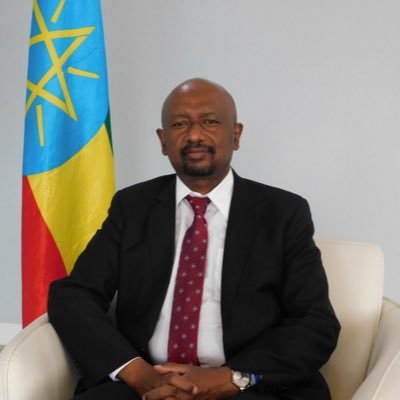
BY TEWODROS KASSA
Ethiopia’s electricity production capacity is significantly lower, considering the electric energy sources potential and its population of over 110 million. Even though Ethiopia has abundant electricity potential which is estimated up to 60 GW and is the highest in Africa, the current production is only 4.3 GW thus only 7% is being utilized. The country’s main electricity consumption is generated from renewable sources of energy like hydropower, solar, wind, among others.
Recently, the Berlin Energy Transition Dialogue (betd21) held participating policy makers and practitioners from different parts of the world.
Addressing the betd21, Minister of Water, Irrigation and Energy Eng. Sileshi Bekele (PhD) said that Ethiopia is implementing the Sustainable Development Goals (SDGs) by translating into local actions.
And the Berlin Energy Transition Dialogue (betd21) is a very good opportunity for Ethiopia and other African countries to discuss success stories and to harness the new energy technologies and business models to be replicated.
“From my country’s and other least developing countries perspective it needs a long way to go to achieve sustainable energy transition which is a crucial development input and enabler for the 2030’s Sustainable Development Goals (SDGs) agendas.”
Ethiopia is endowed with a variety of renewable energy potentials like many African countries. However, only 4.5 GW is exploited so far and the access rate is not more than 45 percent and the per capita electricity consumption is around 100 kwhr per year which is one of the least electricity accesses in Africa.
The clean cooking access is not more than 12 percent. The bulk of our national energy consumption is made from raw mass resources which poses a binding constraint for our socio-economic development.
Despite the country’s socio-economic progress during the last decades Ethiopia still remains with the 20 poorest countries in the world. In this regard, my country has embarked on an ambitious journey to achieve urban and rural electricity access for all in line with the spirit of the 2030 agendas for SDGs. Our national electrification program which was launched in 2017 aims to achieve urban and rural electricity access 100 percent by 2032, Eng. Sileshi stressed.
Therefore, 35 percent of our population will be connected through off-grid technology. Our national electrification program is one of the least cost approaches and delivers three important goals.
The first is balancing efficiency and equity in access delivery, maximizing the reach of electrification programs while minimizing the time required for all Ethiopians to have electricity access while leaving no one behind principle. The second is supporting socio-economic growth and human development. And the third is achieving and proving universal access to electricity has rightly been devoted to the SDGs.
For instance, by reducing the health impact on women and children by replacing inefficient cooking fuels, empowering productive industries in rural and urban areas and modernizing agriculture besides creating new jobs to further employment.
Even though, Ethiopia accounts for a negligible share for the Co2 emission we are highly vulnerable to the impact of climate change. To tackle this climate change, our country is a front runner initiating the climate resilient green economy strategy in 2011 which is the foundation of Ethiopia’s national determined contribution.
In this regard, we are also with the initiative of Prime Minister Abiy Ahmed (PhD) making promising achievements. The huge green legacy program which helps on mitigation and carbon recursion which is planting 5 billion trees a year. At the moment, we have planted so far 10 billion trees.
The Minister further said that this year preparations are underway to plant 6 billion additional trees. So we are progressing very well in this regard. We are also conducting a power sector reform program to unlock financial, institutional, organizational and other impending factors on development of the sector by leveraging public-private partnerships and development partners’ support.
Eng. Sileshi emphasized that it is high time for African countries to put their resources and enhance regional cooperation and integration in order to improve international competitiveness by making energy services available at competitive prices.
Accelerating the construction of African energy interconnection will promote cross-border and inter-regional interconnection and strongly ensure reliable and affordable supply of clean energy access as a driving force for industrialization and regional development integration in Africa. That will be a cornerstone for attaining the 2030’s agendas of the United Nations (UN) and the 2063’s agendas of the African Union (AU).
Experts in the sector recommended that the potential of Ethiopia to use renewable energy resources needs special focus to change its economy and the living standard of its citizens. The geographic nature of Ethiopia varies, and the potential of generating hydropower, solar power, wind power, and others is also geographically dependent like the Renaissance Dam of Ethiopia which will eliminate the shortage of electricity when it starts power generation. The government shall motivate the use of renewable energy and allow investors to generate and sell it for citizens with proper price.
Electrical energy is the core of sustainable development and reduction of poverty. Energy poverty directly or indirectly affects the living standard of individuals in Ethiopia. The civilization of citizens is also measured with the use of modern technologies to make their lifestyle simple. The education system, health system, and agricultural system need to have sufficient electricity to improve the service delivery to individuals.
Most of the population living in rural parts of Ethiopia uses firewood as an energy source, which brings deforestation, global warming, and health problem.
The quality and distribution of education in rural Ethiopia are also affected by energy poverty. The energy poverty in Ethiopia is challenged by the pandemic COVID-19 in terms of education systems and sharing information about the pandemic disease to create awareness using online information sharing technology.
Generally, poverty of energy significantly affects the rural area of Ethiopia as compared to urban areas. The government and private sectors of the country shall focus on renewable energy sources to minimize the effect of energy poverty on citizen lifestyle.
The Ethiopian Herald March 28/2021





